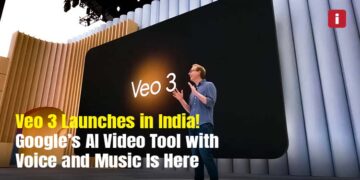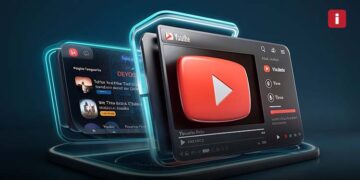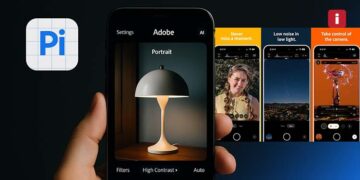The Next Leap in Display Innovation
For decades, 3D technology has promised to immerse us in a new dimension—but the catch has always been the glasses. Whether it was movie theaters with red-blue lenses or early 3D TVs at home, the inconvenience of wearing eyewear killed the hype before it could reach the masses.
Now in 2025, a quiet revolution is finally gaining traction: glasses-free 3D displays. And at the forefront of this revolution is Leia Inc., a trailblazer in light field display technology that offers real-time, immersive 3D visuals without the need for wearables.
At Insight Tech Talk, we’re diving deep into how Leia and other tech pioneers are making 3D finally work—anytime, anywhere, and without glasses.
What Is a Glasses-Free 3D Display?
A glasses-free 3D display, also known as an autostereoscopic display, delivers depth perception and dimensionality without requiring the viewer to wear special lenses. This is achieved through technologies such as:
- Lightfield displays
- Lenticular lenses
- Parallax barriers
- Eye-tracking rendering systems
Instead of projecting two slightly different images to each eye using glasses, these displays handle the split at the source—guiding different views to each eye directly through the screen.
Leia Inc.: Leading the Lightfield Revolution
Who Is Leia Inc.?
Founded in 2014 and headquartered in California, Leia Inc. is the world’s leading provider of light field display technology. Its vision is bold: to make immersive 3D experiences part of our everyday digital life—without the goggles.
Leia’s name is inspired by the iconic holographic communication from Star Wars—and their work reflects that ambition.
Flagship Technologies
- Leia Light Field Display (Lume Pad Series):
A tablet display that can seamlessly shift between 2D and 3D modes, offering interactive depth with unmatched clarity. - LeiaSR™ (Super Reality):
A software platform that enhances 3D content with spatial depth and dynamic rendering. - Leia App Store & SDK:
Developers can build native 3D applications and games, opening a new frontier for immersive apps on tablets, laptops, and eventually smartphones.
Lume Pad 2: The First Glasses-Free 3D Tablet
The Lume Pad 2, released by Leia Inc., is the world’s first AI-powered 3D tablet with eye-tracking-based depth rendering. It converts 2D media (like images and videos) into 3D in real-time and also supports native 3D content through its custom SDK.
Key features:
- 12.4” QHD lightfield display
- Qualcomm Snapdragon processor
- Dual front cameras for eye-tracking
- LeiaStream for 3D streaming content
It’s been adopted by creators, educators, medical professionals, and enterprises that need immersive visualization without the complexity of VR/AR headsets.
Why 2025 Is the Tipping Point for Glasses-Free 3D Displays
1. Advances in AI and Eye-Tracking
Companies like Leia Inc. have developed sophisticated AI rendering engines and real-time eye-tracking, allowing displays to adapt depth cues dynamically. This means smoother transitions, less nausea, and more convincing depth across a wider field of view.
2. Miniaturization for Mobile Devices
What started on tablets is now moving to smartphones, laptops, and even automotive dashboards. The tech is becoming compact and power-efficient enough for widespread consumer adoption.
3. Content Ecosystems Are Maturing
With platforms like Leia App Store and open SDKs, developers can now create native 3D content more easily. As a result, ecosystems for 3D entertainment, learning, and productivity are beginning to grow organically.
Other Companies Driving the 3D Display Revolution
1. Looking Glass Factory
Looking Glass is a pioneer in holographic displays targeted at developers, designers, and enterprises. Their displays offer:
- Multi-view lightfield rendering
- Touchless interaction
- Deep integration with Unity and Unreal Engine
Their Looking Glass Portrait is a desktop-sized holographic display used for interactive storytelling, design review, and holographic video calls.
2. Sony
Sony has entered the scene with its Spatial Reality Display, designed for professional 3D modeling, product visualization, and design. It uses:
- High-speed vision sensors
- AI-based facial recognition
- 4K display technology for premium visuals
Though niche, it’s pushing the bar for industrial and creative use cases.
3. Acer SpatialLabs
Acer’s SpatialLabs laptops and monitors bring glasses-free 3D to gamers, creators, and product designers. Their laptops feature:
- Real-time 2D to 3D conversion
- AI-driven rendering
- Optimized 3D playback for CAD, Blender, Unreal, and other platforms
This shows growing hardware integration of glasses-free 3D in mainstream computing.
4. Dimenco
Dimenco is behind the Simulated Reality (SR) displays, which focus on 3D gaming, simulation, and metaverse applications. Backed by Philips, Dimenco’s displays are being integrated into B2B systems across industries like automotive, defense, and design.
Real-World Use Cases for Glasses-Free 3D Tech
1. Healthcare and Medical Training
Medical professionals can now use 3D anatomy visualization tools on Leia tablets or Looking Glass displays for more immersive diagnostics and teaching.
2. Automotive HUDs and Dashboards
Automakers are experimenting with lightfield dashboards to show layered information—like navigation, alerts, and object proximity—in 3D space, reducing driver distraction.
3. 3D Content Creation
From movies and gaming to architectural visualization, content creators now have tools to preview their work in 3D—without headsets or VR.
4. E-Commerce and Retail
Brands are using glasses-free 3D to showcase products in stores and online with more interactivity. Imagine seeing a sneaker, turning it around, and zooming in—all in real-time 3D on a screen.
Benefits of Glasses-Free 3D Displays
- Immersive Without Isolation – No need to wear goggles or headphones
- Ergonomic and Comfortable – Reduces fatigue compared to VR headsets
- More Natural Interactions – Supports touch, voice, and gesture input
- Accessible to Wider Audiences – No technical setup or wearable gear
- Content Adaptability – Works with both 2D and 3D content
Challenges and Limitations
1. Limited Viewing Angles
While lightfield displays are improving, many models still have a “sweet spot” for optimal 3D effect especially with parallax-based systems.
2. High Cost
Professional-grade 3D displays from Sony or Looking Glass remain expensive, limiting mass adoption in consumer markets.
3. Content Availability
Although tools for 3D content creation exist, the ecosystem still lacks wide consumer-ready libraries like what we have for video or games.
4. Power Consumption
Adding eye-tracking, depth rendering, and lightfield projection can increase power draw—an issue for mobile or battery-powered devices.
The Road Ahead: What to Expect in the Next 5 Years
- 3D Smartphones Reboot: After early failures like the HTC EVO 3D, companies like Leia are revisiting the smartphone format with far better tech.
- Integration with AI & XR: Expect AI-generated 3D content and hybrid XR applications blending real and virtual worlds on flat surfaces.
- Education & Remote Training: Glasses-free 3D could become a staple in online learning, letting students interact with dynamic models in biology, physics, or engineering.
- Retail & Advertising: In-store holographic displays and 3D billboards will become eye-catching tools for brands in a saturated media landscape.
Conclusion: The Rise of the Third Dimension No Glasses Required
Companies like Leia Inc., Looking Glass Factory, Acer, Sony, and Dimenco are collectively breathing life back into a dream that once fizzled out: true, immersive 3D for everyone.
By removing the barrier of glasses and offering natural, dynamic depth, these technologies are reshaping how we consume content, interact with devices, and even perceive digital reality.
As 2025 unfolds, glasses-free 3D displays may soon evolve from novelty to necessity especially in a world hungry for immersive experiences, minus the hassle.
At Insight Tech Talk, we’re keeping a close eye on this exciting space and we’ll be here to explore every new layer as it unfolds.













































